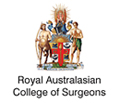Cataracts
What is a cataract?
Around half of Australians aged between over 65 to 74 have cataracts. A cataract is a cloudy area in the lens of the eye that interferes with vision by diffusing light as it passes through the eye. Cataract symptoms can include:
- cloudy or foggy vision
- blurry or distorted vision
- changes in colour vision
- frequent increases in eyeglass or contact lens prescriptions
- poor night vision (especially affected by headlights)
- progressive loss of vision
- halos or glare around lights
- double vision
- loss of contrast
- a white or ‘milky’ spot over the pupil of the eye
A cataract may display a number of different symptoms and be caused by a variety of factors, including age, injury, and certain diseases. While some people have cataracts at birth or develop them early in life, the majority of cataract diagnoses occur in patients who are in their 60s or 70s.

Different types of cataracts
There are several types of cataracts:
Age Related Cataract
Nuclear Sclerosis
This is a hard cataract. The lens becomes hard and yellow as it ages. This usually progresses slowly over time. This type of cataract causes greater impairment of distance vision than near vision. In the early stages, the hardening of the lens causes the refractive power to change causing the lens to become myopic or nearsighted. In some cases patients are able to read without their eyeglasses, this condition is called second sight.
Cortical
This is a peripheral cataract. The cloudiness is located near the outer edges of the lens. The effect on vision varies depending on the location of the cloudiness on the lens. A common symptom is glare from light sources such as headlights of oncoming cars. Cortical cataracts vary greatly in their rate of progression.
Posterior Subcapsular
This cloudiness begins at the very back layer of the lens. This usually occurs in younger patients. The common symptoms are glare and poor vision in brightly lit conditions. Near vision tends to reduce more than distance vision. In addition to being one of the main types of age-related cataracts, posterior subcapsular cataracts can occur as a result of trauma, corticosteroid use and exposure to radiation.
Congenital Cataract
These are present at birth. This type of cataract occurs in 1 out of 2000 births. These cataracts may not affect vision. If they do, they may need to be removed. The main reasons these occur are usually the child has an associated syndrome with this, may be inherited and one third are due to undetermined causes.
Secondary Cataract
When doing cataract surgery, the surgeon removes the inner portions of the lens. The outside layer of the lens, called the capsule is left in place to hold the artificial implanted lens. This outer layer can become cloudy and cause visual disturbance. This secondary clouding is called a secondary cataract. The onset of a secondary cataract can occur within months or years after cataract surgery. It usually occurs in both eyes. This type of cataract is easily treated by laser.
Traumatic Cataract
This type of cataract is a result of either, an injury by physical force, radiation, electrical current, chemicals or disease such as diabetes. These may become present right after the injury or years later.
Causes of cataracts
Most cataracts develop as people get older, and usually they are first noticed around the age of 50-60. The reason why is not yet known. One theory is that it is caused by a disturbance in the fluids and nutrients in the lens. In younger people there are certain factors that can increase your risk of getting cataracts. These include:
- diabetes – this can cause a secondary cataract to develop
- an injury to the eye
- exposure to ultraviolet light from sunlight
- medication use such as long-term use of steroid tablets
- smoking
- heavy drinking
- a family history of cataracts
Cataract treatment
Cataract surgery and cataract treatment involves removing the natural lens which has become discoloured and hard, and replacing it with an intra-ocular lens (IOL). Laser cataract surgery is also available and can offer cataract patients the same precision and safety of laser technology. Most IOLs are fixed monofocal lenses designed to deliver optimum distance vision. However, other types are now available, such as bifocal or multi focal IOLs which provide focused vision for both distant and for reading distance; in many cases this will mean reading glasses may only be required for low light or very small print. Your doctor will advise you of the best option for you depending on your individual requirements and lifestyle. Cataract treatment is usually done in a day surgery environment and takes approximately half an hour. Cataracts cannot be cured by any type of medication, eye exercise, alternative therapy, diet or glasses. Surgery is the only way to remove a cataract.










